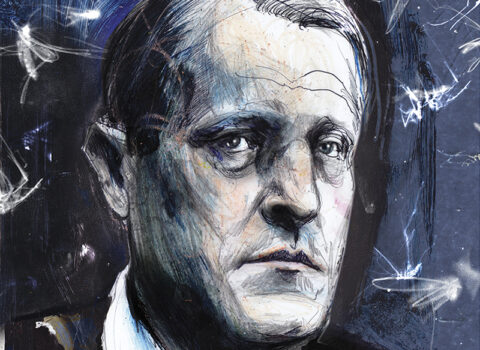I Know Why the Caged Bird Cannot Read
How American high school students learn to loathe literature
Published in the September 1999 issue of Harper’s Magazine, “I Know Why the Caged Bird Cannot Read” argues that many of the books taught in American high schools fail to instill in students a passion for literature. The author reviewed about eighty high-school reading lists. The full article is free to read at Harpers.org through August 3. Subscribe to Harper’s Magazine for access to our entire 165-year archive.
[Lede]
From a Christian Science Monitor review, published July 30, 2015, of Go Set a Watchman, a recently released early draft of Harper Lee’s 1960 novel To Kill a Mockingbird.
By many accounts, American literature’s most famous one-hit wonder should have stayed that way.
Indeed, Harper Lee’s Go Set a Watchman, the most controversial 20th-century novel of the 21st century, has problems beyond its now-notorious depiction of Atticus Finch as a fallen hero. Talky and preachy, this sort-of-sequel lacks the cinematic power of its legendary predecessor. What’s more, the novel’s origin story is peculiar, and the worrisome dispute over the frail Lee’s role in its surprise release is enough to make anyone want to skip a second visit to the Maycomb of To Kill a Mockingbird.
Narrated affably enough by a nine-year-old girl named Scout, To Kill a Mockingbird is the perennially beloved and treacly account of growing up in a small Southern town during the Depression. Its hero is Scout’s father, the saintly Atticus Finch, a lawyer who represents everything we cherish about justice and democracy and the American Way, and who defends a black man falsely accused of rape by a poor white woman. The novel has a shadow hero, too, the descriptively named Boo Radley, a gooney recluse who becomes the occasion for yet another lesson in tolerance and compassion.
Such summary reduces the book, but not by all that much. To read the novel is, for most, an exercise in wish-fulfillment and self-congratulation, a chance to consider thorny issues of race and prejudice from a safe distance and with the comfortable certainty that the reader would never harbor the racist attitudes espoused by the lowlifes in the novel. We (the readers) are Scout, her childhood is our childhood, and Atticus Finch is our brave, infinitely patient American Daddy. And that creepy big guy living alone in the scary house turns out to have been watching over us with protective benevolent attention.
Maya Angelou and Harper Lee are not the only authors on the lists. The other most popular books are The Great Gatsby, The Scarlet Letter, The Adventures of Huckleberry Finn, and The Catcher in the Rye. John Steinbeck (The Pearl, Of Mice and Men, The Red Pony, The Grapes of Wrath) and Toni Morrison (Song of Solomon, Sula, The Bluest Eye, Beloved) are the writers after Shakespeare-represented by the largest number of titles. Also widely studied are novels of more dubious literary merit: John Knowles’s A Separate Peace, William Golding’s Lord of the Flies, Elie Wiesel’s Night, and Ray Bradbury’s Fahrenheit 451, Dandelion Wine, The October Country, and Something Wicked This Way Comes. Trailing behind these favorites, Orwell (Nineteen Eighty-Four and Animal Farm) is still being read, as are the Brontës (Wuthering Heights and Jane Eyre).
How astonishing then that students exposed to such a wide array of masterpieces and competent middlebrow entertainments are not mobbing their libraries and bookstores, demanding heady diets of serious or semi-serious fiction! And how puzzling that I should so often find myself teaching bright, eager college undergraduate and graduate students, would-be writers handicapped not merely by how little literature they have read but by their utter inability to read it; many are nearly incapable of doing the close line-by-line reading necessary to disclose the most basic information in a story by Henry James or a seemingly more straightforward one by Katherine Mansfield or Paul Bowles.
The explanation, it turns out, lies in how these books, even the best of them, are being presented in the classroom.
Read the full article here.

















































































































